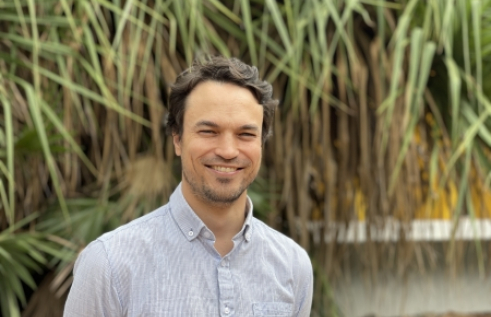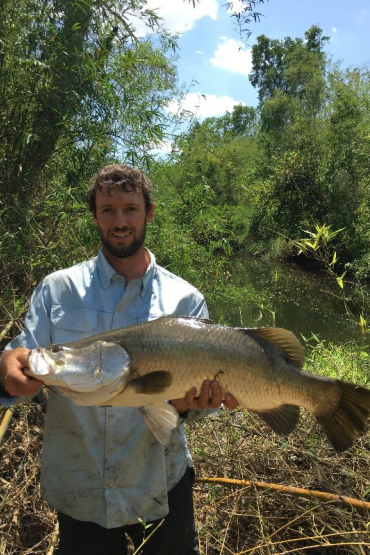RIEL seminar series
Fish and floodplains: drivers of barramundi migration in the Top End
| Presenter | Brien Roberts | |
|---|---|---|
| Date |
|
|
| Time |
to
|
|
| Contact person | E: riel.outreach@cdu.edu.au | |
| Location |
Yellow 1.1.39 If you wish to attend this seminar via ZOOM please email riel.outreach@cdu.edu.au for a link |
|
| Open to | Public | |
Migration is a fundamental aspect of the lifecycle of many animals and enables individuals to exploit habitats and resources that are geographically separated from breeding sites. Movement patterns are often highly variable among individuals, which may have profound implications for the productivity and resilience of populations and the ecosystem services (e.g., fisheries) they provide. Diadromous fishes, which undergo migrations between marine and freshwater habitats, are exemplars of such behavioural flexibility, which makes them ideal candidates to investigate the mechanisms that underpin migration.
My PhD research uses barramundi as a model species to explore the causes and consequences of variable migratory behaviour within populations. Overall, my findings underscore the importance of productive freshwater habitats for barramundi populations and highlight the complexity of trade-offs between life history characteristics and individual fitness. I argue that hydrological variability, which characterises northern Australian rivers, plays a key role in enhancing the productivity of important commercial, recreational and subsistence fisheries. My research outlines the threats to tropical riverine and coastal fisheries imposed by increasing demand for freshwater resources, emphasising the need to incorporate the preservation of life history diversity into the goals of sustainable development.
Brien Roberts is a PhD candidate with RIEL at Charles Darwin University. He has a keen and lifelong interest in aquatic biology, and has recently submitted his thesis, titled ‘Drivers of catadromous migration in barramundi in the wet/dry tropics of northern Australia’. He is currently working as an aquaculture scientist with NT Fisheries.
Related Events

Carbon and water adventures in north Australia
Read more about Carbon and water adventures in north AustraliaWith climate change and increasing land use pressures there is more and more demand for knowledge of carbon dynamics and water use as well as water resource management. Lindsay’s research is focused on providing better understanding of the biophysical environment of tropical land and water systems.

From CCTV to AI
Read more about From CCTV to AIFish farms have historically been a black box in terms of understanding the behavioural needs and preferences of the fish within them, as the only chance to assess what they are up to is when they break the surface. Sunil has been monitoring fish behaviour below the surface of farms for 35 years.

Hidden emissions
Read more about Hidden emissionsIn this seminar, Clément will present results from a new database of greenhouse gas (GHG) concentrations and fluxes in tropical freshwater systems. He will highlight the extreme variability in GHG concentrations and fluxes across the tropics, and the role of small streams, ponds and riparian wetlands as globally significant hotspots of GHG emissions.
